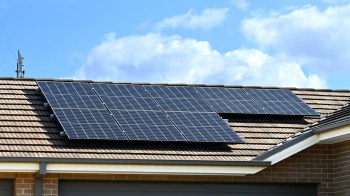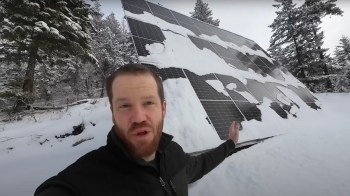In the largest test of its kind ever performed in California and potentially the world, energy from 100,000 home batteries across the state was used to supplement the power grid during a time of peak energy use, according to PG&E, a Northern California utility company.
"At exactly 7:00pm, a massive experiment began," PG&E said on its website. "Across the state, thousands of Tesla Powerwalls and Sunrun home batteries kicked into action."
"These weren't just helping individual homes–they were working together as one giant, invisible power plant."
Put differently, instead of ramping up electricity production at large, centralized power plants to meet a temporary peak in demand, PG&E instead supplemented the power grid by drawing off the energy stored in roughly 100,000 home batteries.
"For two hours, this 'virtual power plant' (VPP) delivered 535 megawatts of electricity to the grid," PG&E explained. "That's enough to power hundreds of thousands of homes during peak demand."
The experiment, which was performed July 29 from 7 p.m. to 9 p.m., was intended to test the performance of the VPP prior to anticipated California heat waves in August and September.
Save $10,000 on solar panels without even sharing your phone number Want to go solar but not sure who to trust? EnergySage has your back with free and transparent quotes from fully vetted providers that can help you save as much as $10k on installation. To get started, just answer a few questions about your home — no phone number required. Within a day or two, EnergySage will email you the best local options for your needs, and their expert advisers can help you compare quotes and pick a winner. |
These heat waves put a strain on the power grid as homes and businesses crank up their air conditioning units, and everyday functions like refrigeration require more energy.
In order to ensure that there will always be enough electricity for everyone, electrical grids must be designed with enough capacity to meet the system's peak demand. Adding extra capacity traditionally has meant building more large, centralized power plants.
Building new power plants can be very expensive and, depending on the kind of plant built, it also can be bad for public health and the environment. Plus, it means that much of the system's capacity goes unused at non-peak times.
By creating a VPP from thousands of home batteries, utility operators have hoped to meet peak demand without having to build additional power plants. The statewide VPP experiment was an effort to examine the feasibility of this model.
|
Do you have a backup power system at your home? Click your choice to see results and speak your mind. |
The test was a resounding success.
"VPPs deliver for the grid!" exclaimed Andrew McAllister, commissioner of the California Energy Commission, in a statement. "The test embodies California's innovation economy by applying digital tools to access and aggregate untapped electric resources - supporting grid reliability and helping manage electricity costs."
Third-party analysts agreed.
"Performance was consistent across the event, without major fluctuations or any attrition," said Ryan Hledik of the Brattle Group, which conducted an analysis of the VPP test, per Electrek. Hledik said the test showed "dependable, planning-grade performance at scale."
In addition to knowing that they are contributing to their neighbors' energy needs, owners of home battery systems often receive a financial incentive to participate in the program. For example, Sunrun offers customers $150 per battery per season to be a part of the VPP, according to Electrek.
"We're all connected to the same grid, and small contributions from many individuals add up to hugely important, shared benefits," said McAllister, the CEC commissioner. "Even bigger, better things to come!"
Pairing a home battery system with solar panels makes your home more resilient in the event of a power outage, while also lowering your energy bill to practically zero.
Additionally, if you participate in a virtual power plant program, you can know that you are contributing cleaner, renewable solar energy to the grid, while potentially earning some extra cash in the process.
EnergySage offers a free tool that makes it easy to compare quotes from vetted local solar installers, while also maximizing tax credits and other incentives, saving customers up to $10,000 in the process.
Join our free newsletter for weekly updates on the latest innovations improving our lives and shaping our future, and don't miss this cool list of easy ways to help yourself while helping the planet.














